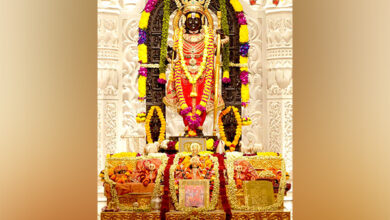Ring in 2024 with global glair: Embracing New Year’s traditions around the world
Dive into the tapestry of global celebrations as we approach 2024. Explore New Year's traditions worldwide, from Spain's grape-eating ritual to Japan's soba noodle tradition, promising a culturally rich start.

As the world anticipates the arrival of 2024, consider infusing your New Year’s celebration with traditions from diverse corners of the globe. These time-honored customs not only add cultural richness to festivities but also serve as grounding rituals, connecting us to a shared human experience. From slurping soba noodles in Japan to devouring 12 grapes in Spain, each tradition offers a unique and symbolic way to bid farewell to the old year and embrace the new one.
The Ball Drop Extravaganza in Times Square
In the United States, the iconic New Year’s Eve tradition involves millions tuning in to watch the ball drop in Times Square. Originating in 1907 as a celebration of the New York Times’ new headquarters, this annual spectacle has become a beloved tradition, symbolizing the transition from one year to the next. Braving the cold streets of Times Square or enjoying the event from the warmth of their homes, Americans usher in the new year with this grand countdown.
12 Grapes for Prosperity in Spain
Across the Atlantic, Spain has a unique tradition known as “las doce uvas de la suerte,” where individuals eat 12 grapes at the stroke of midnight, each grape representing a chime of the clock. Rooted in the late 19th century, this tradition aims to ward off bad luck and invite prosperity for the coming year. The catch? Successfully consuming all 12 grapes within seconds before the clock strikes midnight.
Savoring Soba Noodles in Japan
In Japan, the New Year commences with a bowl of warm soba noodles. Tracing its origins back to the Kamakura period, when a Buddhist temple distributed noodles to the less fortunate, this tradition symbolizes breaking away from the old year. The long, thin noodles, both firm and easy to bite, embody a fresh start as the nation welcomes the dawn of a new year.
French Finesse: Champagne and All-Out Celebrations
France elevates New Year’s celebrations by embracing the tradition of Champagne. While wine is a common indulgence in France, Champagne takes center stage during New Year’s festivities. The celebration includes lively dancing and hopping from one party to another. Accompanied by sparkling wines, revelers indulge in oysters, turkey, goose, or a Cornish hen, maintaining a consistent culinary theme for the occasion.
Danish Plate Breaking for Good Luck
In Denmark, an unusual New Year’s Eve tradition involves throwing plates at friends. Contrary to expectations, this act is believed to bring good luck. According to Danish folklore, the more broken plates accumulated at your doorstep, the luckier you’ll be in the approaching year.
Philippines’ Round Fruits Symbolizing Prosperity
Filipino families have a charming tradition of ensuring 12 round fruits like apples, grapes, and plums are present on New Year’s Eve. The round shape of these fruits is believed to symbolize coins, ushering in prosperity for each month of the coming year.
Onions and Potatoes Predicting Fortunes
In Greece, hanging an onion outside the door after New Year’s Day church service symbolizes fertility and growth. Onions, known for sprouting on their own, are believed to bring good fortune to households. Meanwhile, in Colombia, the “agüero” tradition involves placing three potatoes under each person’s bed—peeled, unpeeled, and partially peeled. At midnight, blindly choosing a potato predicts the upcoming year’s luck, financial challenges, or a mixture of both.
Irish Bread Banging for Prosperity
In Ireland, families ensure a healthy and prosperous New Year by banging loaves of Christmas bread against walls and doors to ward off evil spirits. This unique tradition reflects a cultural belief in safeguarding the home from negative influences as the new year unfolds.
Italian Red Underwear for Good Luck
In Italy, a quirky tradition suggests wearing red underwear as the clock strikes midnight to invite good luck. While the origins are debated, the vibrant hue symbolizes a brighter future. Embrace the tradition with red attire and accessories for a whimsical start to the new year.
As we bid adieu to the old and welcome the new, these global traditions offer a delightful tapestry of customs, creating a mosaic of celebrations that connect us to the diverse and vibrant cultures of the world.
You mighty also be interested in – Rahul Gandhi back in Italy to celebrate New Year, but due to COVID, only EU/ Italian citizens are allowed



